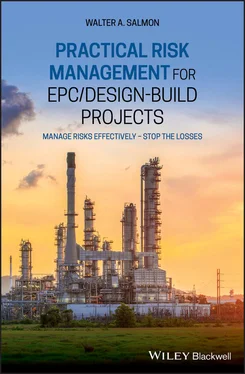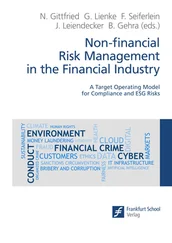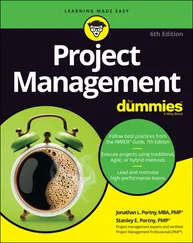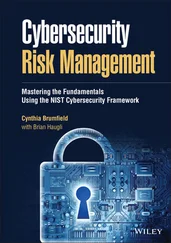223 220
224 221
225 222
226 223
227 224
228 225
229 226
230 227
231 228
232 229
233 230
234 231
235 232
236 233
237 234
238 235
239 236
240 237
241 238
242 239
243 240
244 241
245 242
246 243
247 244
248 245
249 246
250 247
251 249
252 250
253 251
254 252
255 253
256 254
257 255
258 256
259 257
260 258
261 259
262 260
263 261
264 262
265 263
266 264
267 265
268 266
269 267
270 269
271 270
272 271
273 272
274 273
275 275
276 277
277 278
278 279
279 280
280 281
281 282
282 283
283 284
284 285
285 286
286 287
287 288
288 289
289 290
290 291
291 292
292 293
293 294
294 295
295 296
296 297
297 298
298 299
299 300
Practical Risk Management for EPC/Design-Build Projects
Manage Risks Effectively – Stop the Losses
Walter A. Salmon
FRICS MAPM MACostE

This edition first published 2020
© 2020 John Wiley & Sons Ltd
All rights reserved. No part of this publication may be reproduced, stored in a retrieval system, or transmitted, in any form or by any means, electronic, mechanical, photocopying, recording or otherwise, except as permitted by law. Advice on how to obtain permission to reuse material from this title is available at http://www.wiley.com/go/permissions.
The right of Walter A. Salmon to be identified as the author of this work has been asserted in accordance with law.
Registered Offices
John Wiley & Sons, Inc., 111 River Street, Hoboken, NJ 07030, USA
John Wiley & Sons Ltd, The Atrium, Southern Gate, Chichester, West Sussex, PO19 8SQ, UK
Editorial Office
9600 Garsington Road, Oxford, OX4 2DQ, UK
For details of our global editorial offices, customer services, and more information about Wiley products visit us at www.wiley.com.
Wiley also publishes its books in a variety of electronic formats and by print-on-demand. Some content that appears in standard print versions of this book may not be available in other formats.
Limit of Liability/Disclaimer of Warranty
While the publisher and authors have used their best efforts in preparing this work, they make no representations or warranties with respect to the accuracy or completeness of the contents of this work and specifically disclaim all warranties, including without limitation any implied warranties of merchantability or fitness for a particular purpose. No warranty may be created or extended by sales representatives, written sales materials or promotional statements for this work. The fact that an organization, website, or product is referred to in this work as a citation and/or potential source of further information does not mean that the publisher and authors endorse the information or services the organization, website, or product may provide or recommendations it may make. This work is sold with the understanding that the publisher is not engaged in rendering professional services. The advice and strategies contained herein may not be suitable for your situation. You should consult with a specialist where appropriate. Further, readers should be aware that websites listed in this work may have changed or disappeared between when this work was written and when it is read. Neither the publisher nor authors shall be liable for any loss of profit or any other commercial damages, including but not limited to special, incidental, consequential, or other damages.
Library of Congress Cataloging-in-Publication Data applied for
ISBN HB: 9781119596172
Cover Design: Wiley
Cover Image: © krisanapong detraphiphat/Getty Images
Within any jurisdiction there are cyclical deviations in the type of and investment in major projects that are driven by investment priorities, political mandates and corporate strategies. However, at a global level there has, and will continue to be, huge investment. In 2018, the investment in major projects was around $4 trillion and, by all accounts, this investment will increase significantly year on year in an attempt to service the world's rapidly expanding population.
The procurement method on these projects varies but, in the main, the risk of both design and construction is passed to the contracting team either through a design and build, EPC or an EPC variant framework. That is all well and good, but the reality of the procurement process is that there is often a total disconnect between those that draft the contract and those that deliver the project. The contract is the single most important document on a project and in theory creates a platform of certainty, allowing those parties to it to organise and plan. However, so much of the focus in contracts is on risk allocation and risk consequence. If one asks lawyers the sorts of things that are most important on a major project, they will say things such as limitation of liability, price, termination rights and so on. However, if one asks the project team what things are most important, they may say things like reaching and maintaining a consensus around scope, having clarity as to the responsibility of the parties and good communication lines. In other words, in the eyes of the project team, what drives success in projects is about relationships and underlying governance, not management of risk consequence.
I know of a number of very good books on the subject of EPC contracts and major projects, but by and large these are written by lawyers for lawyers, and so the focus tends to be on the sorts of legal issues I identified above, sometimes with practical advice obtained vicariously. The unique offering of this book is that it purposefully focuses away from contract interpretation and legalese towards navigating the reader through a path to understanding the issues and solutions on live projects from the perspective of someone who has been there and seen it many times over. The author's experience, working for over 40 years at the centre of major projects across various sectors for some of the world's biggest companies, has been methodically and logically distilled into a treasure chest of wisdom. The book clearly sets out his understanding and interpretation of risk and putative problems. It explains in great detail all of the key roles on major projects and how those roles can and should interface successfully. Throughout the chapters, it offers practical tips and guidance for navigating a route to a successful project, or placing the contractor in the best possible position when problems arise.
The book will be of great use to contractors, project managers, employers and lawyers. It provides insight for those responsible for managing projects, those who wish to properly understand the various roles, interfaces and risks that need to be considered, and to lawyers who wish to gain a better understanding of how major projects operate and what adjustments to drafting might be taken, or live project advice might be given, to avoid or mitigate risk. If even part of the guidance given in this book is put into practice, I have little doubt that the incidence of disputes would dramatically reduce, as would the negative impact of risks on the contractor's profitability.
James Pickavance
Partner – Jones Day
Читать дальше













